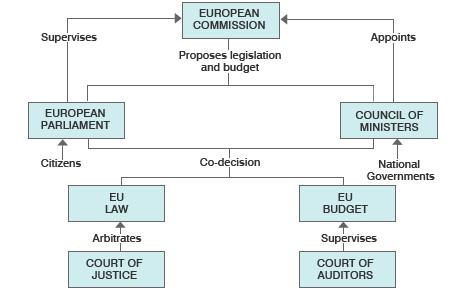How EU institutions work: Overview
- Published
The institutions of the European Union form the framework for co-operation between the 27 member states.
The European Commission is the only one that can initiate legislation.
It submits its proposals to the European Parliament and the Council of Ministers, to be approved or rejected.
The parliament also has responsibility for supervising the 27 commissioners and is the only institution with the power to sack them. Commissioners are appointed by the Council of Ministers and then approved by the parliament.

Once legislation has been passed, the European Court of Justice makes sure it is interpreted uniformly across all the member states.
The Court of Auditors is the watchdog for the budget, checking that the money is being well spent.
The EU also relies on a number of smaller bodies to keep it running. There is a raft of agencies dotted across the continent dedicated to every aspect of European life.